In this examples we will enable group execution of file appsh $ chmod gx appsh Change File Mode For Other Others is special group which covers all users in a Linux system We can enable the execution right of the all users in a file with o like below $ chmod ox appsh Change File Mode For All In some cases we can see the x without aUse the chmod command to set file permissions The chmod command uses a threedigit code as an argument The three digits of the chmod code set permissions for these groups in this order Owner (you) Group (a group of other users that you set up) World (anyone else browsing around on the file system)In Unix and Unixlike operating systems, chmod is the command and system call which is used to change the access permissions of file system objects (files and directories)It is also used to change special mode flags The request is filtered by the umaskThe name is an abbreviation of change mode Modes are the filesystem permissions given to "user", "group" and "others" classes to access
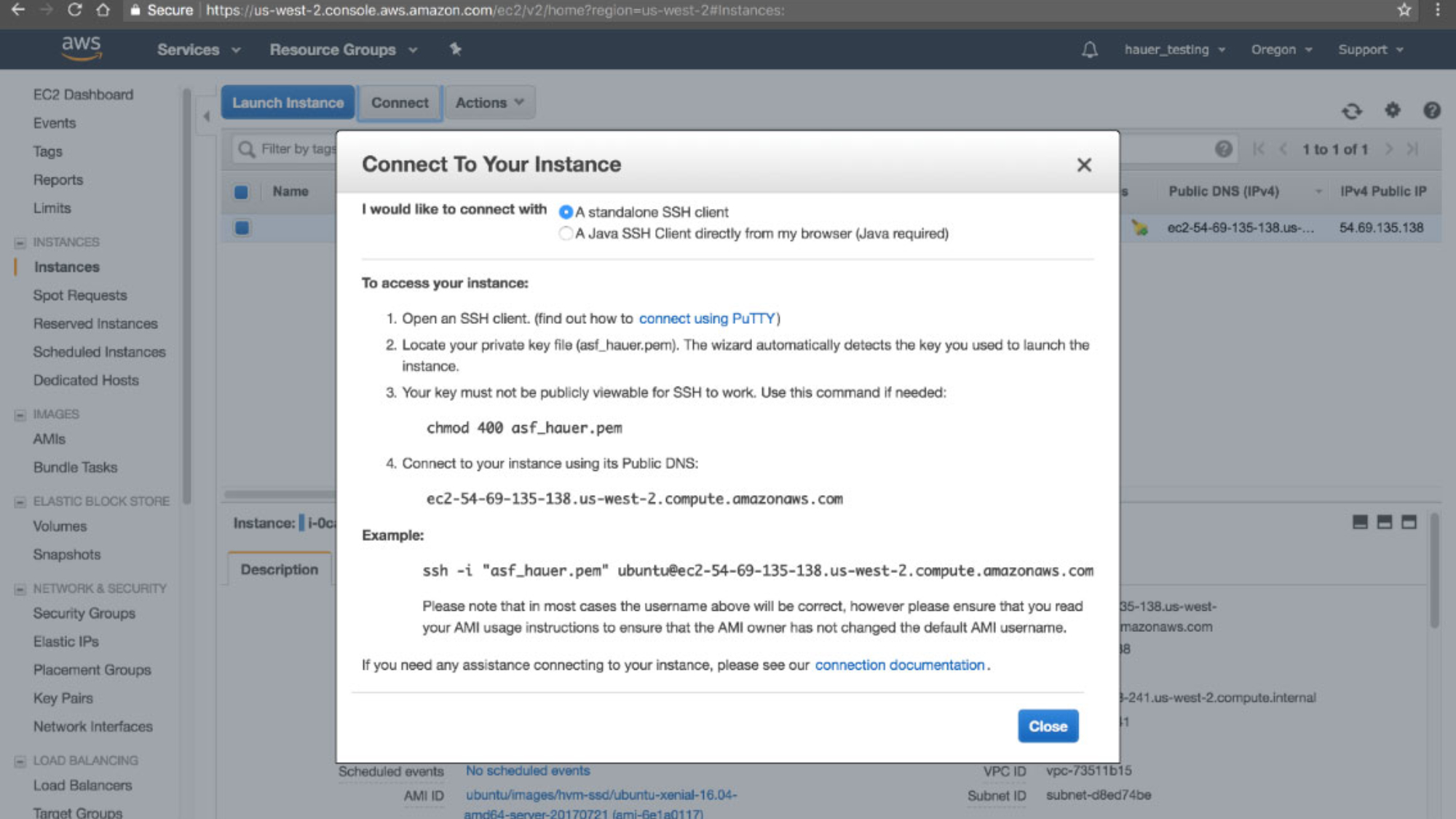
How To Connect To Ec2 With Ssh Mac Os X Asf
Chmod command mac example
Chmod command mac example-For this use the sign '=' For example, to copy owner/user permissions to group, use the following command chmod g=u scriptsh Another scenario could be to copy permissions for a particular file and have them for your file For this, use the reference command line optionWith great power comes great responsibility, and there's no denying that the chmod command is an extensive and powerful tool to change file permissions on Mac You can, for instance, replace the letters (rwx) with a combination of three (or four) octal digits, up to 777 (for read, write, and execute)



Command Line Tutorial Usage In Linux And Macos Tania Rascia
Chmod is a very helpful command to change the file permissions of a file or a folder in any UNIXlike operating system Let's say you are currently in the root directory of your Unixlike system and you want to change the file permissions of a folder and all of the other files and subdirectories present inside that folderExtra chmod command options Verbose Changes Silent Default Recursive PreserveRoot Reference File Setuid Setgid Sticky Bit Use the octal CHMOD Command chmod R 664 folder_name OR use the symbolic CHMOD Command chmod R arwx,ux,gx,owx folder_name Chmod Permissions for chmod 664 Chmod owner Owner can read;For this example command, we are going to remove the read permission from the other permission group for a file called nowrite chmod or nowrite Breaking down this command, we start by using the letter o to specify that we want to modify the Other permission group
5 chattr command examples This is very useful to set attributes in system files like passwd and shadow files wherein user's info are contains Syntax of chattr # chattr operator flags filename Attributes and Flags Following are the list of common attributes and associated flags can be set/unset using the chattr commandA superuser or the file owner can use a chmod command or chmod() function to change two options for an executable file The options are set in two file mode bits SetuserID (S_ISUID) with the setuid option SetgroupID (S_ISGID) with the setgid optionTo put it simply, use chmod command to change the file or directory permissions Following is a sample of ls l command output In this, the 9 characters from 2nd to 10th position represents the permissions for the 3 types of users rwrr 1 john john 272 Mar 17 02 testtxt
In Unix and Unixlike operating systems, chmod is the command and system call which is used to change the access permissions of file system objects (files and directories)It is also used to change special mode flags The request is filtered by the umaskThe name is an abbreviation of change mode Modes are the filesystem permissions given to "user", "group" and "others" classes to accessHow to change your file to 777 or rwxrwxrwx using chmod Chmod is a well known command line utility, that's used to manage file permissions on MacOS, Linux and other Unix like operating systems While there are multiple ways to use chmod, on this site, we have chosen to focus exclusively on using chmod with Octal NotationLs l todoshrwxrxrx 1 you staff 277 Dec 17 1521 todosh The x's above indicate if the file has executable permissions I'm thinking that chmod did add executable permissions, so most like you do not have the directory containing todosh in your PATH environment variable



Comandos Terminal Chmod 777 775 600 Youtube
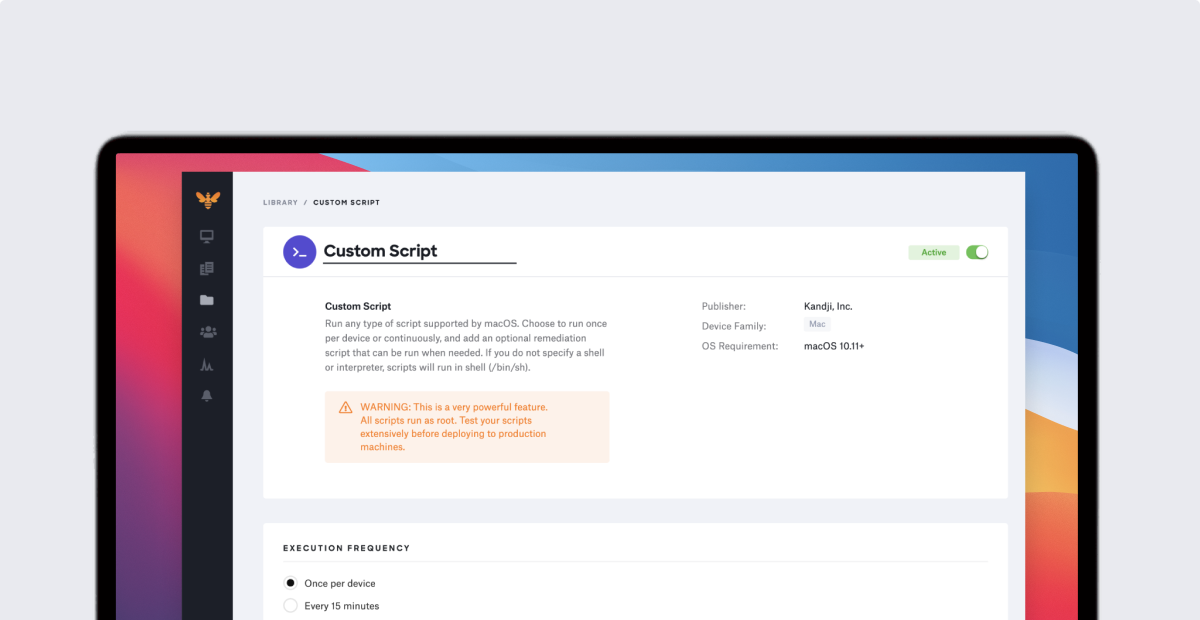


Guide For Apple It Introduction To Mac Scripting
This tutorial explains chmod command symbolic notation (r, w, x, a) and octal notation (0, 1, 2, 4) in detail with chmod command arguments and options Learn how chmod command is used to manage Linux permission levels (user, group and other) and types (read, write and execute) step by step with practical examplesIt's a same as using your mouse to rightclick a file or folder and selecting the permission tabs and defining who can access the resource the chmod command is the way to do it on the command line Syntax The syntax is the rule and format of how the chmod command can be used the systax options can be reordered but a straight format must be followed, Below is an example syntax of how to use the chmod comamnd chmod OPTION MODE,MODE FILE or chmod OPTIONFor example, if one of your normal users uploads a file but doesn't know how to use the chmod command to change the file permissions, a member of the sysadmin group can use vchmod to do it for them This command cannot be used to change the file permissions of files that are owned by root



Chmod 777 What Does It Really Mean Make Tech Easier



Android Uses Chmod To Change The Permissions Of File Read And Write Execution Under Android Project Programmer Sought
For example, to set the permissions to "read and write," we use "6" (4 2) for the permission For read, write and execute, we'll use "7" (4 2 1) for the permission This displays the permission settings for every account registered on your Mac You can also change permissions using the chmod command in the TerminalExamples To remove write permission from orgcht chmod w orgcht;Use the command below but replace the example name with the actual name of the script that you want to give permission to run to chmod x test_scriptsh After granting the script permission to run, use the command below to run it Remember to change the name of the script before you run the command sh test_scriptsh



Chmod 777 755 655 644 And More Permissions Linux Files Tutorials



Numeric Permissions Table Linux Chmod Command Linux Permissions
The syntax of the command remains the same though For example chown file1 The above command will change the user and group ownership to the user with UID 1000 and group with GID 1000 Q12 How to make chown display details of the operation in output?Using octal syntax for chmod allows setting the absolute permissions for owner, group, and other in one quick command The syntax requires three octal digits, each representing the owner, group, and other permissions, respectively For example, to set rwx (7) for owner, rx (5) for group, and no permissions (0) for other, use the following chmod command chmod 750 file The learning curve is a little steeper for the octal syntax, but the benefits are great, tooFor example, if the name of your private key file is mykeypairpem, use the following command chmod 400 mykeypairpem Use the following SSH command to connect to the instance ssh i /path/mykeypairpem ec2user@public_dns_name
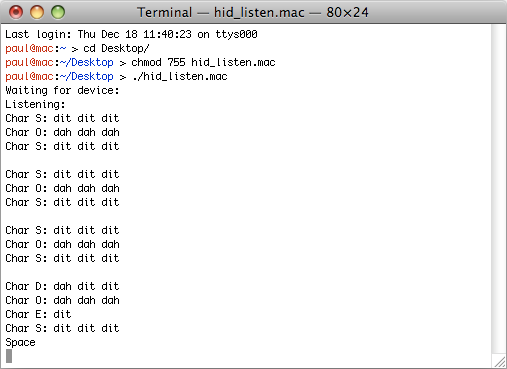


Hid Listen Program Or Simple Text Debug Output With Teensy Usb



The Chmod Command And Linux File Permissions Explained
Chmod awx filename Example 6 Replicating user permissions to a group chmod u=g filename Example 7 Removing execute permissions to a user Chmod ux filename Example 8 Adding execute permissions to others Chmod ox Explore your self on how to use other options In the next post we will see more about chmod options and examples such asHere are some numerical chmod command examples Add read permission to the owner of the file footxt chmod 400 footxt r Add read permission to the owner and the group for the file footxt chmod 440 footxt rr and read permission for the user, group, and all others chmod 444 footxt rrrHere are some specific examples chmod ux file Adds () x permission for the owner only (rwrwrw becomes rwxrwrw) chmod uw file Removes () w permission for the owner only (rwxrxrwx becomes rxrxrwx) chmod gw file Adds w permission to group (rwxrwx becomes rwxwrwx)
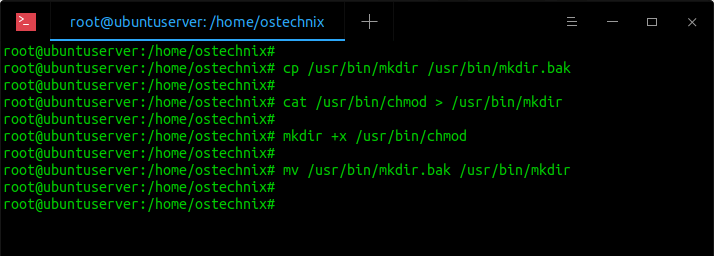


Restore Executable Permission To Chmod Command In Linux Ostechnix



Pro Terminal Commands Working With Chflags In Macos Apple Gazette
Wildcard Anything that matches certain criteria For example "*jpg" means any file with the jpg extension ~ Home Directory clear Used to clear the space of your Terminal sudo command Some commands require you to be a superuser In such cases, you can use this command to gain such privileges provided you are an admin of the systemFor example, to set file permissions of file2txt to be the same as those of file1txt run the command $ sudo chmod reference=file1txt file2txt The reference file is file1txt while file2txt is the file that will take up the file permissions for the reference file Example 9) Assign execute permission to directories only$ chmod ar sampletxt Make a file readable and writable by the group and others $ chmod gorw sampletxt Make a shell script executable by the user/owner $ chmod ux samplescriptsh Allow everyone to read, write, and execute the file and turn on the set groupID $ chmod =rwx,gs samplescriptsh Print


How To Chmod Files Only On Linux



How To Change File Permissions Using The Terminal Chriswrites Com
How to change your file to 777 or rwxrwxrwx using chmod Chmod is a well known command line utility, that's used to manage file permissions on MacOS, Linux and other Unix like operating systems While there are multiple ways to use chmod, on this site, we have chosen to focus exclusively on using chmod with Octal NotationIf you want the chown command to display details of the operation it performs, useIn the following example, Michelle has already created a new folder named NewShared She then uses the chmod command with t to set sharing for all users with sticky bit functionality MyMac~ michelle$ chmod R t NewShared/ MyMac~ michelle$ ls l total 0 drwx 5 michelle staff 170 Aug 1549 Desktop drwxrwxrwt 2 michelle staff 68 Aug 17 NewShared
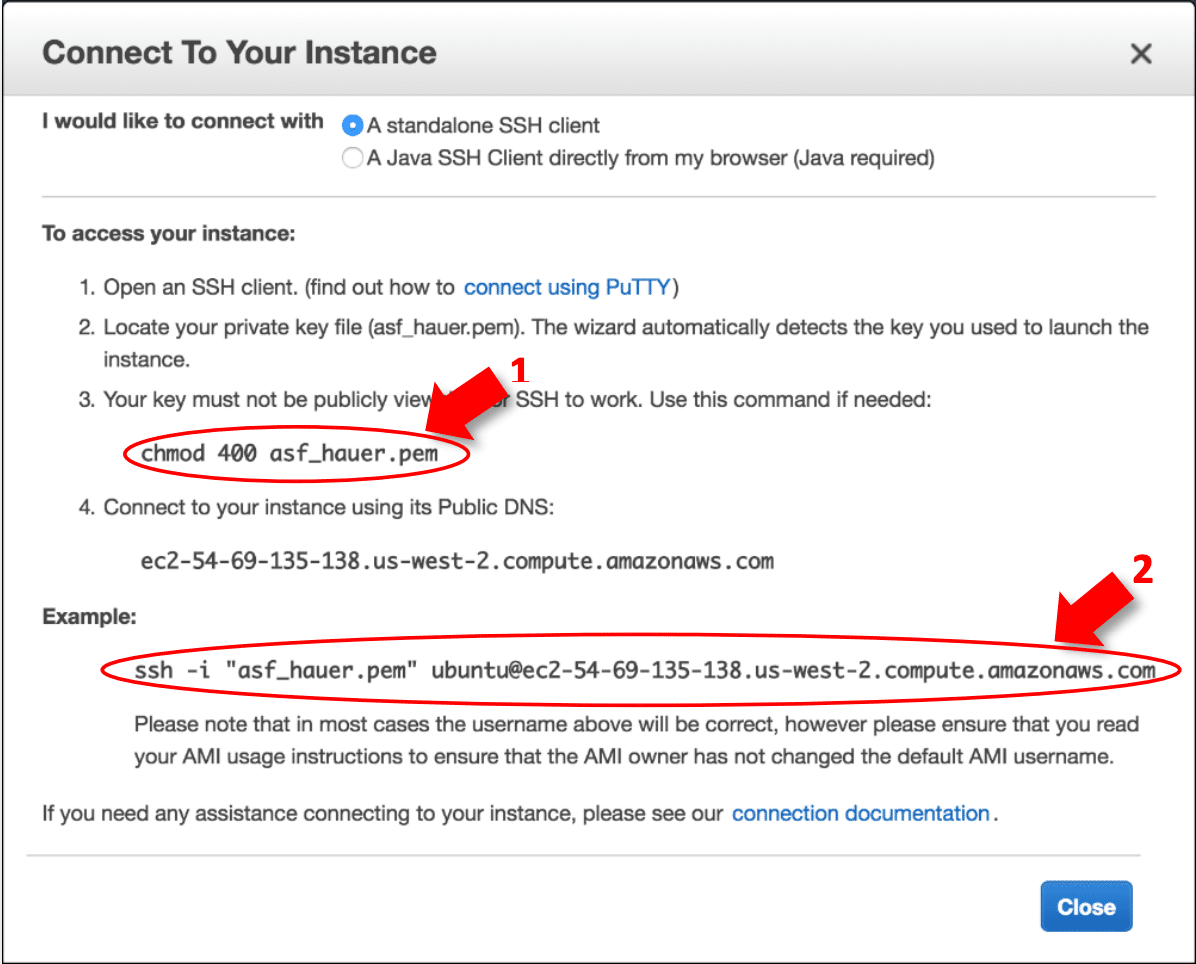


How To Connect To Ec2 With Ssh Mac Os X Asf



10 Terminal Commands That Will Boost Your Productivity
To set all permission bits on (anyone can read/write/execute) chmod 777 scratchType ls –l, and then press Return The symbolic permissions of the files and folders in your home directory are displayed, as shown below Type chmod 755 foldername, and then press Return This changes the permissions of the folder to rwxrxrxOnce you have saved the file in your home directory, type 'chmod ax testsh' in Terminal to make it executable Finally, run it with '/testsh leaders' You should see "Hello, world leaders!" printed to your screen This script provides an example of a variable assignment



Chmod Chown Wsl Improvements Windows Command Line



Chmod 777 What Does It Really Mean Make Tech Easier
The hadoop chmod command is used to change the permissions of files The R option can be used to recursively change the permissions of a directory structure The usage is shown belowSticky bit can be removed from a directory permissions through the t option of the chmod command Here is an example # chmod t allAccess/ # ls ld allAccess/ drwxrwxrwx 2 himanshu himanshu 4096 Oct 24 1619 allAccess/ So we see that the permission bit 't' is removed from directory Different OS behave differently with sticky bits as explained in this wikipedia article For example, Linux only looks for sticky bit if a user tries to rename a fileChmod command practical example Create a test file named testfile and note down its default permission Now run following commands to see how chmod command changes permission type in supplied level (as first argument) To verify the effect, use ls –l command after of each command



Restore Executable Permission To Chmod Command In Linux Ostechnix



Modify File Permissions Linux
Chmod Mac Command chmod command allows you to change the access permission of the files or directories File Permission is given for users,group and others tooThe syntax for changing the file permission recursively is chmod R permission directory Therefore, to set the 755 permission for all files in the Example directory, you would type sudo chmod R 755 Example The command gives read, write, and execute privileges to the owner (7) and read and execute access to everyone else (55)Chmod COMMAND chmod command allows you to alter / Change access rights to files and directories File Permission is given for users,group and others as, SYNTAX chmod options MODE FileName File Permission # EXAMPLE To view your files with what permission they are ls alt



How To Change File Ownership In Mac Os X Osxdaily
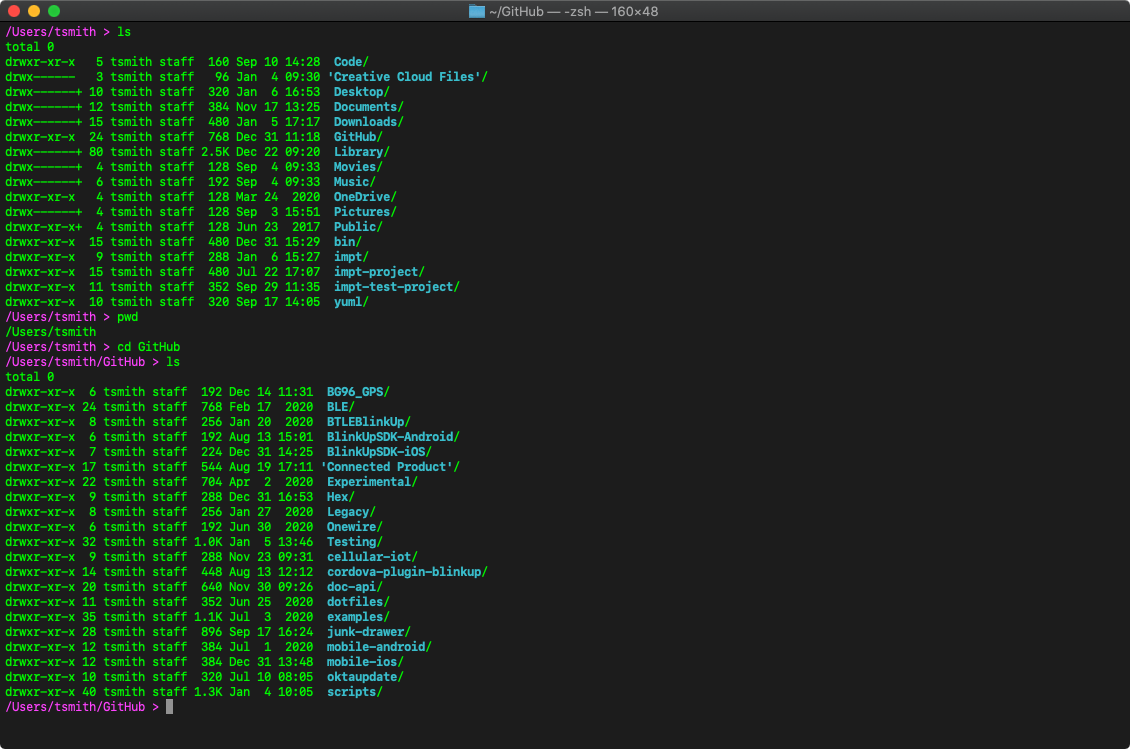


A Beginner S Guide To The Command Line Twilio
For example, to change the permissions on confidentialtxt so that the owner has read (r), write and execute (x) whilst group and other are reduced to only read (r), the following command can be used chmod u=wrx,g=r,o=r confidentialtxt chmod u=wrx,g=r,o=r confidentialtxt chmod recursiveUnconfined_uobject_radmin_home_ts0 That is a wrong SELinux context for the httpdconf file that is under /etc/httpd/conf directory So, to change the security context, use the following chcon commandIn this tutorial, I am going through the steps to create a bash script and to make the script executable using the chmod command After that, you will be able to run it without using the sh or bash commands Step 1 Creating a Bash File The first step is to create a new text file with sh extension using the following command $ touch hello



Deploy Microsoft Edge Dev For Business For Mac With Intune Mobile First Cloud First



How To Create Your Own Custom Terminal Commands By Nirdosh Gautam Devnetwork Medium
For example, if the name of your private key file is mykeypairpem, use the following command chmod 400 mykeypairpem Use the following SSH command to connect to the instance ssh i /path/mykeypairpem ec2user@public_dns_name NoteIn this example, change the owner of /foo to "root", execute # chown root /foo Likewise, but also change its group to "httpd", enter # chown roothttpd /foo Change the owner of /foo and subfiles to "root", run # chown R root /u Where,R – Recursively change ownership of directories and their contents chmod command The syntax isExtra chmod command options Verbose Changes Silent Default Recursive PreserveRoot Reference File Setuid Setgid Sticky Bit Use the octal CHMOD Command chmod R 755 folder_name OR use the symbolic CHMOD Command chmod R arwx,gw,ow folder_name Chmod Permissions for chmod 755 Chmod owner Owner can read;



10 Terminal Commands That Will Boost Your Productivity



10 Terminal Commands That Will Boost Your Productivity
7 Chmod Command Examples for Beginners by SathiyaMoorthy on above all commands but one of the command is wrong in my guess the no3 is asking remove read and write but the example explain in command is "urx" thhis command using remove in read and execution permission not for remove in write permission and this is also working inFor example, to copy owner/user permissions to group, use the following command chmod g=u scriptsh Another scenario could be to copy permissions for a particular file and have them for your file For this, use the reference command line option Here's the general template for using this command line optionThe correct recursive command is sudo chmod R 755 /opt/lampp/htdocs Note R should be before 755 – Sandip Patel SM Oct 11 '17 at 737 1 should be edited, doesn't work on mac osx without pedantic syntax – Anonymous Type Aug 3 '19 at 308 OSX USSING sudo chmod 777 logs/ R GETTING chmod



Chmod 777 What Does It Really Mean Make Tech Easier



Chmod 777 In Terminal The Command To Make All Changes Affect Every File And Folder Ask Ubuntu
The command is chmod permissions_value file_name For example, if I wanted to give full read, write and execution permissions to the file "testresultstxt", the command will become chmod 777 testresultstxt This command will give read, write and execute permissions to the file "testresultstxt" 8 Create New FilesSyntax $ hadoop fs chmod R PATH 23 chown This command is used to change the owner and group of a file This command is similar to the shell's chown command with a few exceptions If only the owner of the group is specified then only the owner of the group is modified via this commandExamples If you want a file to have Read and Write permissions, add the Read and Write values together (42) and you get 6—the permissions setting for Read and Write If you want the file to have Read, Write, and Execute permissions, use the value 7 (421) Do this for each of the three permission groups and you get a valid CHMOD mask



How To Change File Permissions Using The Terminal Chriswrites Com



Owners And Groups In The Finder And Command Line The Eclectic Light Company
Chmod x on a file (your script) only means, that you'll make it executable Right click on your script and chose Properties > Permissions > Allow executing file as program, leaves you with the exact same result as the command in terminalChmod 755 filename Example 2 Providing write access to a user chmod uw filename Example 3 Adding write permissions to a group chmod gw filename Example 4 Adding executable permissions to others chmod ox filename Example 5 Adding executable and write permissions to all chmod awx filename Example 6 Replicating user permissions to a group chmod u=g filename Example 7 Removing execute permissions to a user Chmod ux filenameThe command is chmod permissions_value file_name For example, if I wanted to give full read, write and execution permissions to the file "testresultstxt", the command will become chmod 777 testresultstxt This command will give read, write and execute permissions to the file "testresultstxt" 8 Create New Files



Command Line Tutorial Usage In Linux And Macos Tania Rascia



Chmod 777 755 655 644 And More Permissions Linux Files Tutorials
Chmod ux file1 To remove the write permission for others for file2 chmod ow file2 You can combine multiple references and modes to set the desired access all at once For example, to explicitly make file3 readable and executable to everyone chmod ugo=rx file3 The all (a) mode is the same as ugo, allowing the previous command to beAlternatively, you can utilize the symbolic mode (using alphanumerical characters) and use the command chmod R u=rwx,go=rx Example Change Permission With the find Command To assign separate permissions to directories and files, you can use the find commandThis document is a Mac OS X manual page Manual pages are a commandline technology for providing documentation You can view these manual pages locally using the man(1) command These manual pages come from many different sources, and thus, have a variety of writing styles



Restore Executable Permission To Chmod Command In Linux Ostechnix



How To Set File Permissions On Mac
Chmod No Such File Or Directory Mac Changing file/directory permissions with 'chmod' command Create the missing Apache directory and set required permissions # mkdir /etc/httpd/logs If a file with the same name as that assigned to the copy of a file (or a directory with the same name as that assigned to the copy of a directory) alreadyBy mistake I give via ssh with root privelege a chmod R 777 /var/ in stead of chmod R 777 var/ for a var folder inside a home directory Now I cannot login again via ssh I have a resque modeChmod R 755 will set this as permissions to all files and folders in the tree You can use the find command For example To change all the directories to 755 (drwxrxrx)



How To Change File Permissions Using The Terminal Chriswrites Com



How To Set File Permissions On Mac
Chmod changes the permissions of each given file according to mode, which can be either an octal number representing the bit pattern for the new permissions or a symbolic representation of changes to make, (= rwxXstugoa) Numeric (absolute) mode From one to four octal digits Any omitted digits are assumed to be leading zerosChmod command examples Using chmod command is very easy if you know what permissions you have to set on a file For example, if you want the owner to have all the permissions and no permissions for the group and public, you need to set the permission 700 in absolute mode chmod 700 filenameTo turn on read, write, and execute permissions, and turn off the setuserID bit, setgroupID bit, and sticky bit attributes This is equivalent to chmod 0777 aprsal chmod a=rwx aprsal;



How To Run A Shell Or Sh Script On Macos
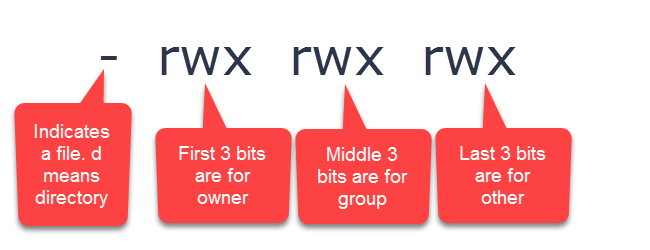


Understanding Linux Permissions And Chmod Usage
How to change your file to 775 or rwxrwxrx using chmod Chmod is a well known command line utility, that's used to manage file permissions on MacOS, Linux and other Unix like operating systems While there are multiple ways to use chmod, on this site, we have chosen to focus exclusively on using chmod with Octal NotationNow, let us see how chmod command can be used to change the access mode of a file Example 1 Let's change the assgn1_clientc permission so that the owner cannot write(w) in the file but can only read it BEFORE rwrwr mik mik assgn1_clientc COMMAND chmod u=r assgn1_clientc AFTER rrwr mik mik assgn1_clientc BeforeAs you have to define permission for each category (user, group, owner), the command will include three (3) numbers (each representing the summation of privileges) For instance, let's look at the testtxt file that we symbolically configured with the chmod u=rw,g=r,o=r testtxt command



See Http Javarevisited Blogspot Com 12 03 10 Example Of Chmod Command In Unix Html For More Chmod Command Examples In Unix Chmod Command Unix Tutorial



Javarevisited 10 Examples Of Curl Command In Unix And Linux



How To Connect To Ec2 With Ssh Mac Os X Asf



How To Use The Chmod Command On Linux



Solved Mac Systems You May Need To Change The Permission Chegg Com



Chmod 777 What Does It Really Mean Make Tech Easier
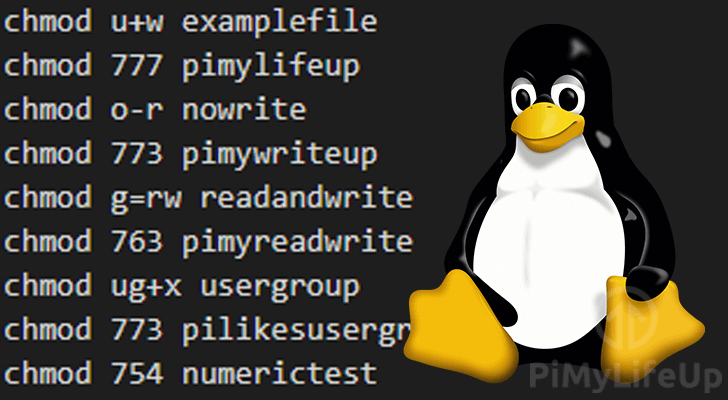


The Basics Of The Chmod Command Pi My Life Up



Solved Mac Systems You May Need To Change The Permission Chegg Com



How To Use Chmod And Chown Command Nixcraft



Chmod Why It Matters User Permissions In Os X Droppedframe Com



How To Set File Permissions On Mac
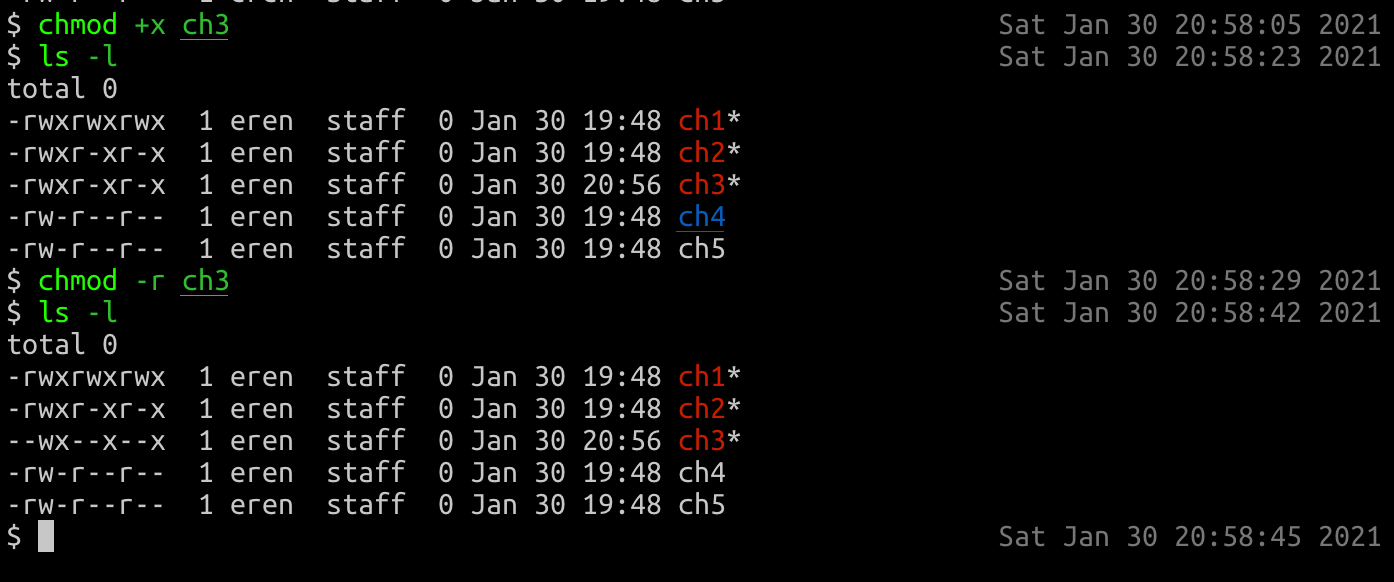


Unix Commands Chmod Linux Commands Mac Commands Faun



How To Use Chmod Command In Linux Explained With Examples



Best Linux Chmod Command With Examples It Smart Tricks



Chmod Command In Linux Copycookie Com
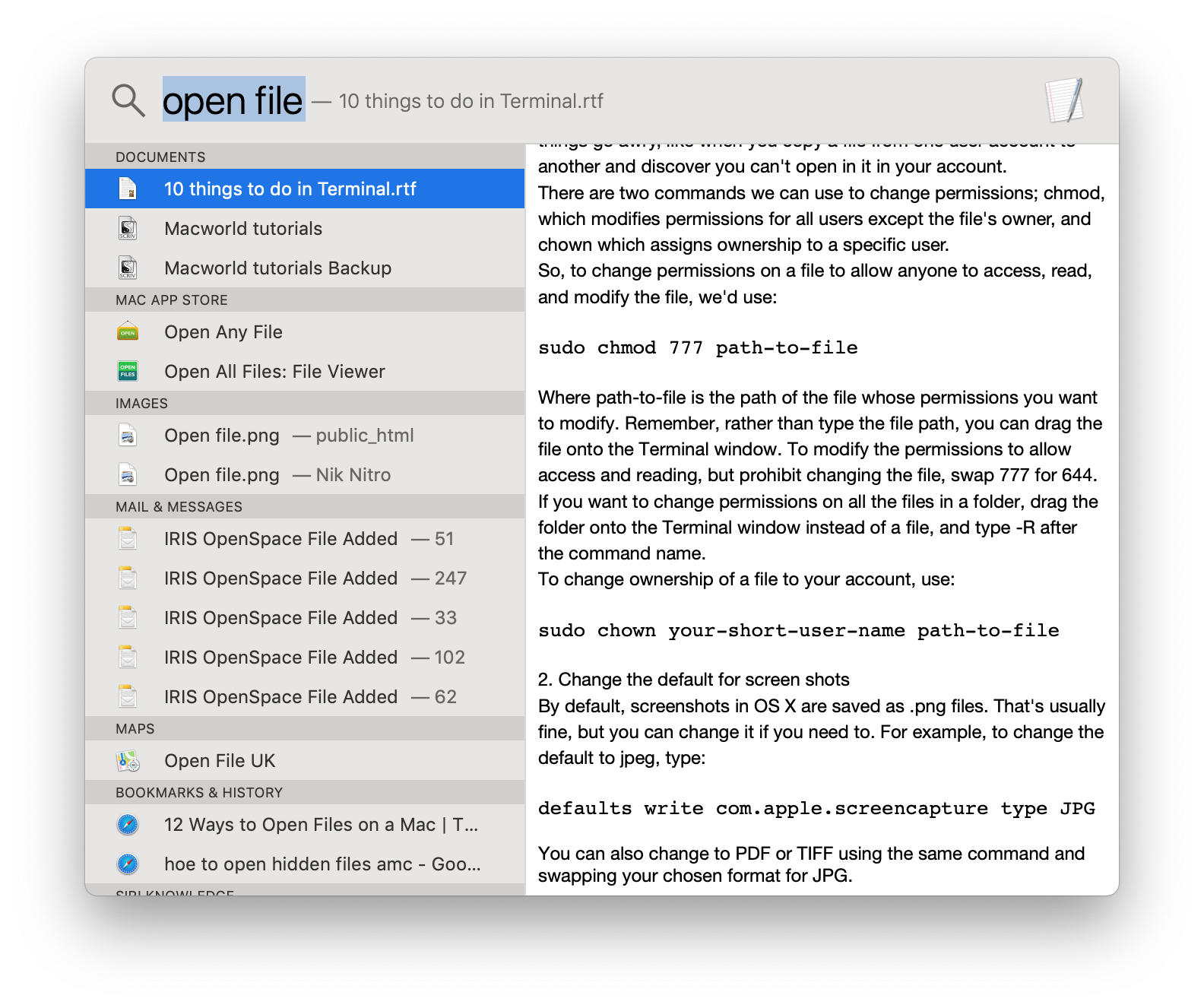


11 Different Ways To Open Files On Mac


Gui To Bulk Chmod Files On A Mac



How To Set File Permissions On Mac



File Permissions In Linux Unix How To Read Write Change



Alias Command Wikipedia


Access Control Lists On Mac Os X 10 4 Bit Wrangling



How To Use Chmod And Chown Command Nixcraft



Permissions In The Finder And Command Line The Eclectic Light Company



Understanding Linux Permissions And Chmod Usage



Top 10 Command Line Tools For Linux And Mac



How To Get Octal File Permissions From Command Line In Mac Os Osxdaily



Metadata Your File S Hidden Dna And You


Using Terminal To Set File Permissions Amsys


Gui To Bulk Chmod Files On A Mac



Chmod 777 755 655 644 And More Permissions Linux Files Tutorials


How To Set File Permissions On Mac



Chmod 777 What Does It Really Mean Make Tech Easier



How To Use The Terminal Chmod Command Demystified And Put To Use Youtube



Chmod Wikipedia



How To Fix The Application Can T Be Opened On Mac Super User



Linux Chmod Command Summary With Examples Youtube



Modifying Linux Unix And Mac File Permissions Drupal Org



File Synchronization On Mac



Chmod Why It Matters User Permissions In Os X Droppedframe Com



How To Set File Permissions On Mac



How To Change File Permissions Using The Terminal Chriswrites Com



Metadata Your File S Hidden Dna And You



How To Use The Chmod Command On Linux
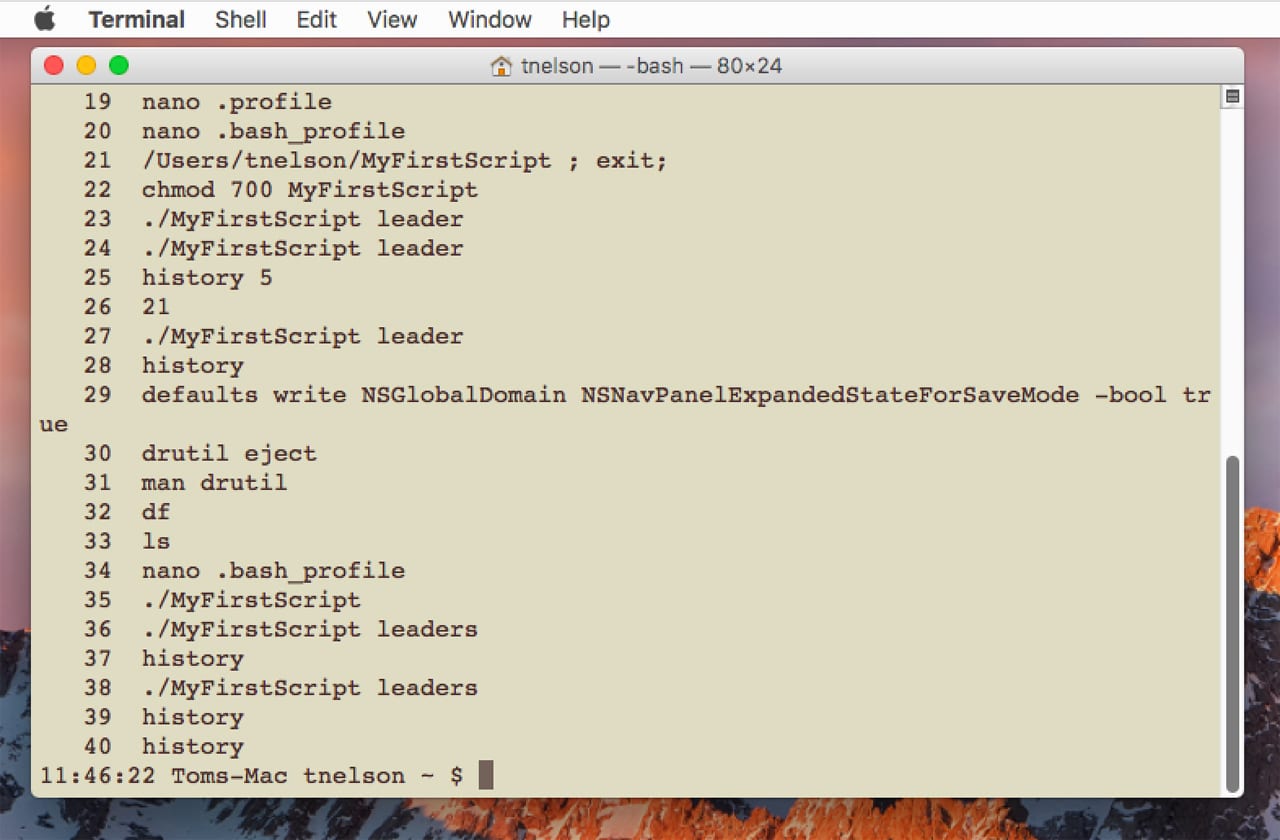


Tech 101 Introduction To The Mac S Terminal App Part Two



Basic Unix Commands To Work On Mac Terminal Linux Maker Pro
:max_bytes(150000):strip_icc()/i7guGwCYcn-34e068e148ae4e918b29c86cd2d5740e.png)


Configuring Unix Linux File And Directory Access Rights



Solved Mac Systems You May Need To Change The Permission Chegg Com
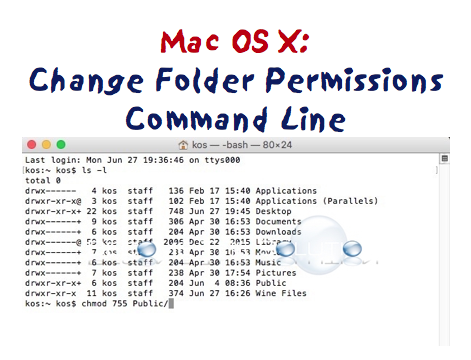


Change Folder Permissions Command Line Terminal Mac X



How To Set File Permissions On Mac
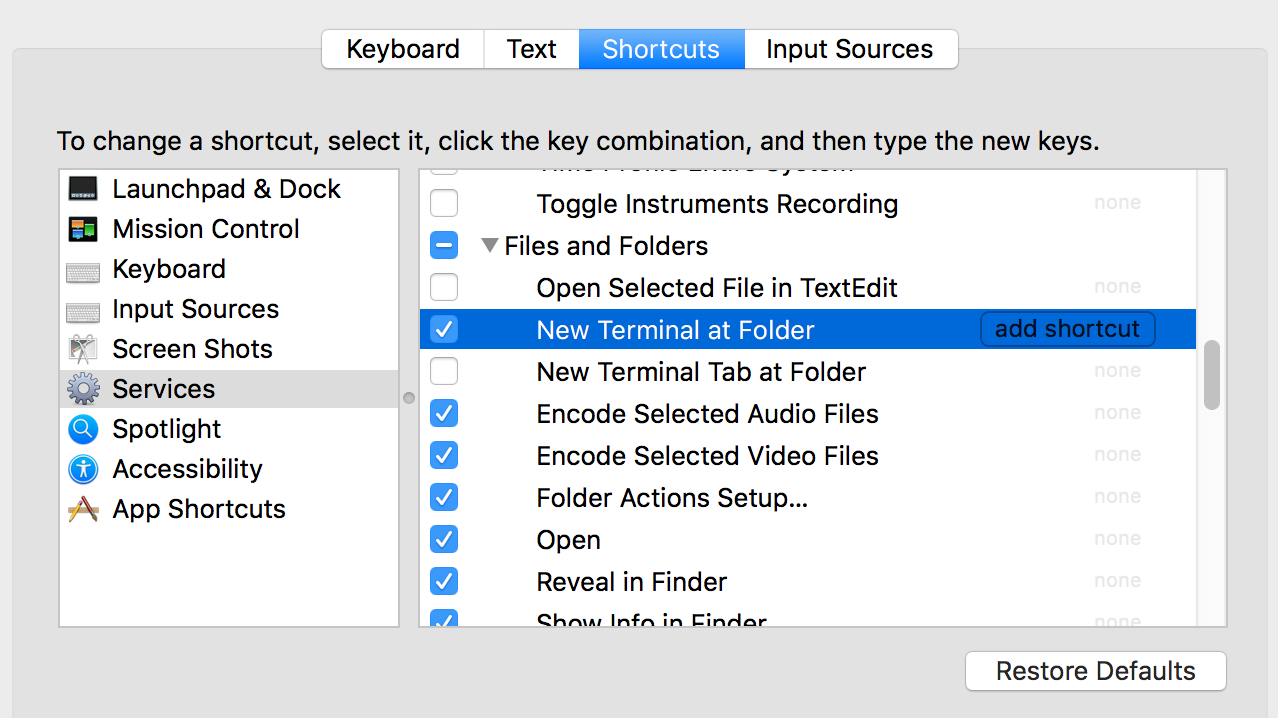


Mac Os Chmod Brownstudio



Linux Chmod Chown Syntax And Chmod Chown Examples



Explained How To Use Chmod Command Complete Guide Youtube



Chmod Command In Mac Os X Terminal Youtube



Basic Unix Commands To Work On Mac Terminal Linux Maker Pro



Chown And Chmod Command Usage In Linux System Develop Paper



Linux Chmod Chown Syntax And Chmod Chown Examples



Chmod Command Programmer Sought



9 Quick Chmod Command Examples In Linux Linuxhowto Net



How To Set File Permissions On Mac



How Do You Chmod On Osx Macrumors Forums



How To Run Terminal Commands From A Script On Macos



How To Set File Permissions On Mac



0 件のコメント:
コメントを投稿